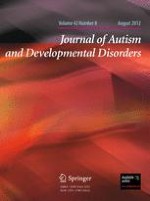01-08-2012 | Original Paper
The Big Picture: Storytelling Ability in Adults with Autism Spectrum Conditions
Gepubliceerd in: Journal of Autism and Developmental Disorders | Uitgave 8/2012
Log in om toegang te krijgenAbstract
Previous work on story-telling ability in autism spectrum conditions (ASC) has found a pattern of relatively intact use of story grammar in ASC narratives; however, prior analysis has concentrated primarily on whether specific story components are included, rather than how they are included. The present study analyzes an existing narrative dataset, concentrating on the kind of information that individuals with and without high functioning autism or Asperger syndrome include about story elements such as setting, character, conflict, and resolution. This analysis showed that individuals with ASC are biased toward providing local over global details about each element, regardless of whether the element involved mental content. These results are discussed in terms of the Weak Central Coherence and Hyper-Systemizing theories.
